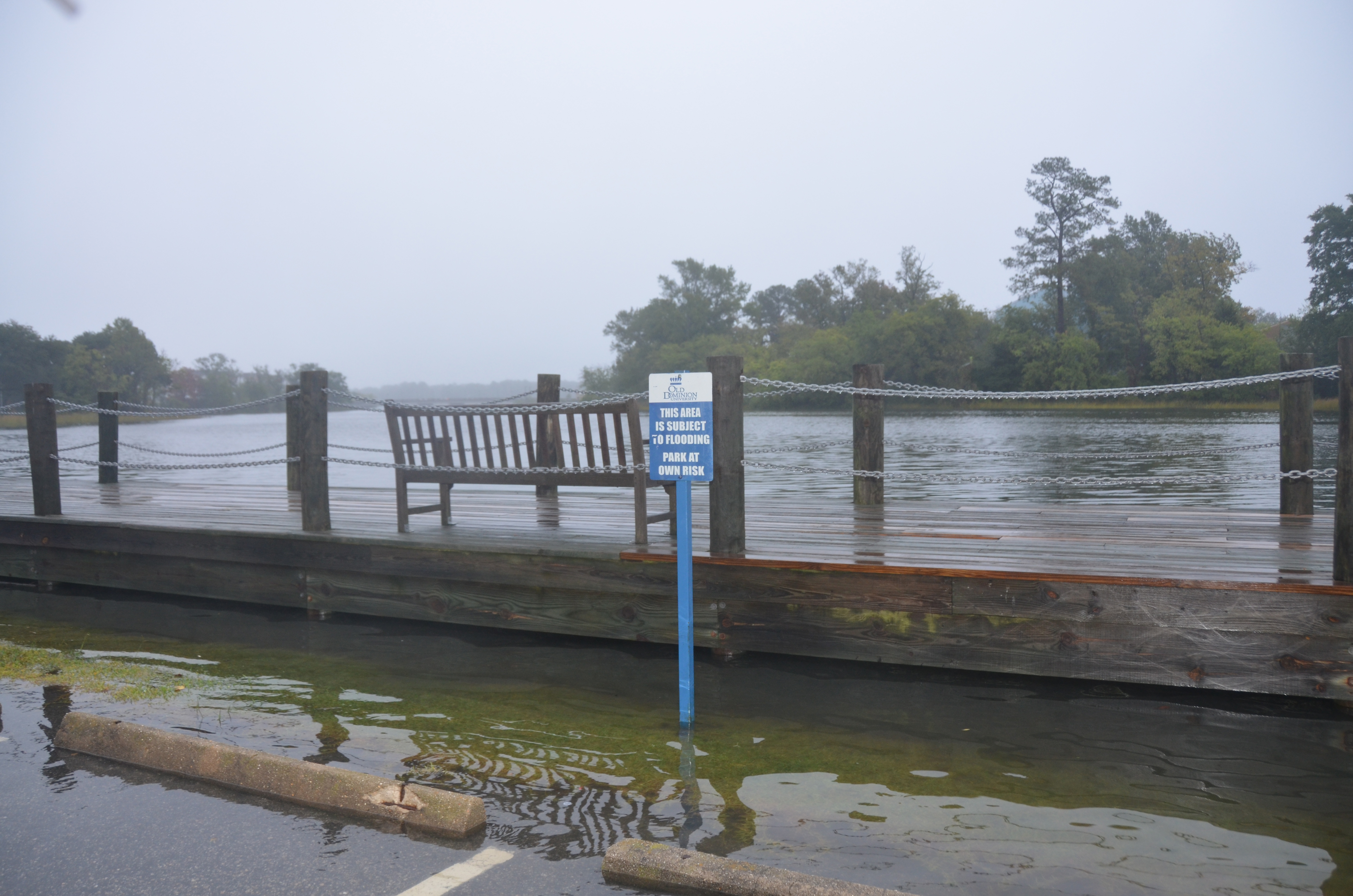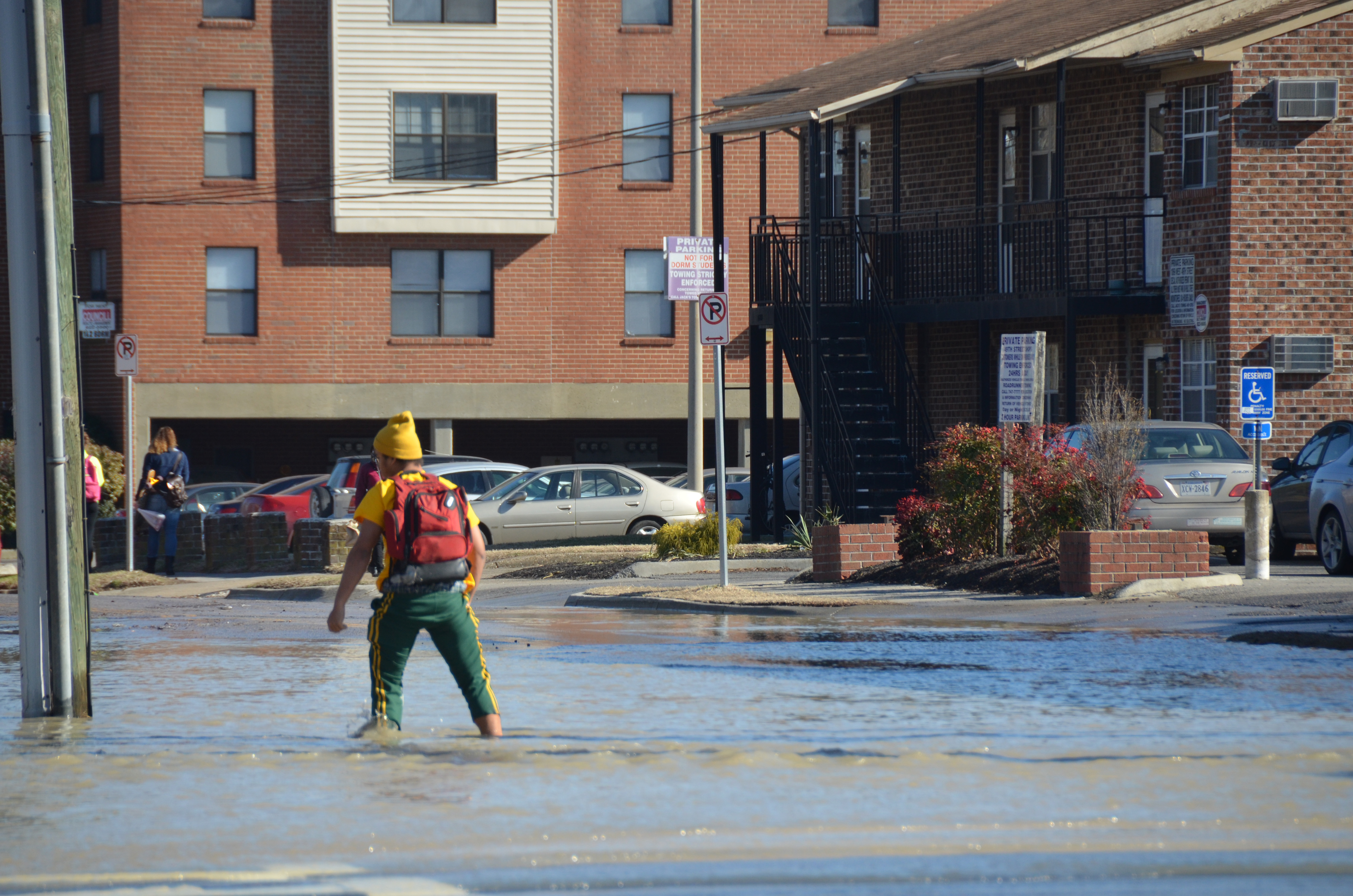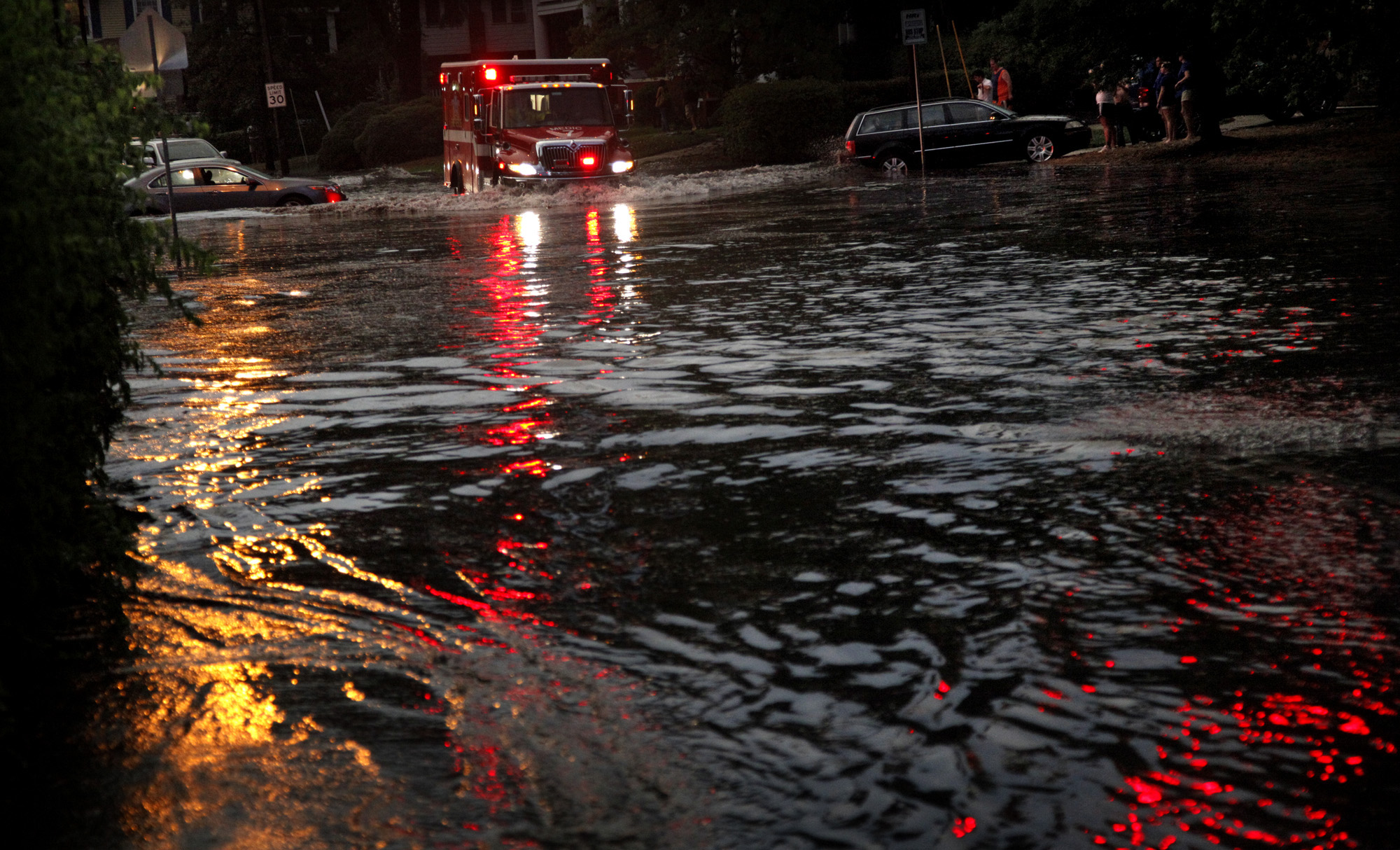Major Hurricane Impact: Is Hampton Roads Ready?
September 01, 2017
 Water from the Lafayette River inlet is pictured as it flows into the Rogers Hall parking lot during a storm.
Water from the Lafayette River inlet is pictured as it flows into the Rogers Hall parking lot during a storm.
By Jon Cawley
Hurricane season escalated rapidly last week with the Gulf Coast landfall of a massive storm that is now being described as the most costly to ever hit U.S. shores — eclipsing even Hurricane Katrina.
The devastation in the Houston area from Hurricane Harvey has been catastrophic, and should serve as a warning to the rest of the nation, Old Dominion sea level rise researchers say.
And with the theoretical high point for tropical activity in the Atlantic falling on Sept. 11, and a new storm with damaging potential forming, residents along the Atlantic coast should take heed.
"Clearly, global warming is a reality. We can debate the causes, but all evidence points to a warmer ocean," said Ray Toll, director of Old Dominion's coastal resilience research. "This year, the vast majority of the western Atlantic is warmer than the historical norm —in some spots, significantly warmer. Warmer oceans fuel these tropical storms as long as the atmosphere is devoid of wind shear. The number of tropicals does not necessarily increase, but their ability to strengthen is enhanced."
Toll, a retired U.S. Navy oceanographer and meteorologist, said Hurricane Harvey's devastation was fueled by warmer than normal water temperatures in the Bay of Campeche and Gulf of Mexico.
"With global warming, this is the new normal," he said.
Toll continued to say global weather patterns are now transitioning from an El Nino to La Nina cycle where the Atlantic becomes more active and the Pacific grows quiet. With the Atlantic hurricane season running until Nov. 30, there is plenty of time remaining for storm activity to threaten the Virginia coast.
In fact, Hurricane Irma has formed in the eastern Atlantic and is currently tracking in a westerly direction.
Toll said, with Hurricane Irma still days away from the coastal United States, its ultimate path — into the Gulf of Mexico or up the Atlantic seaboard — is still unknown, but given the storm's track and intensity, as well as warmer ocean waters, it has the potential to threaten all east coast interests from North Carolina north, he said.
That begs the question: Is Hampton Roads prepared for impact from a major hurricane?
Josh Behr, a research associate professor at ODU's Virginia Modeling, Analysis and Simulation Center, uses storm system data to analyze various impact scenarios. He said category 1 or 2 storms — Hurricane Harvey in comparison was a category 4 with winds of at least 130 mph when it made landfall — have the potential to be catastrophic here.
"It's not just the wind, but the surge and the flooding that causes extensive damage," he said, during a recent interview on WVEC.
If the Hampton Roads region were to receive 50 inches of rain, as southeast Texas has over the past week, there would be widespread flooding across the region, Behr said.
The region needs to continue to prioritize planning, especially regarding vulnerable or fragile populations — groups that have a difficult time preparing for evacuation and are less able to recover immediately after an event and in the long term.
"I think emergency planning today has made great strides and long term planning includes that population in its thinking," he said.
Larry "Chip" Filer, an associate of the Economic Forecasting Project and associate professor of economics, told the Houston Chronicle in an interview that, although FEMA is $20 billion in debt, insurance payouts for Harvey victims are unlikely to be slowed. But those losses are likely to increase pressure for raising premiums for flood insurance because they have to reflect the reality of the associated risk.
"The unfortunate part about this is it's been easy to kick the can since Sandy because we haven't had a big issue," he said.
Filer also believes storm-related problems are only going to get worse as water levels rise.
As we've seen in Houston, that puts a number of individuals under threat, he said, during a WVEC interview discussing the economic impacts of Hurricane Harvey as they relate to Hampton Roads in a similar scenario.
There are two effects, according to Filer. One effect is a short term effect: a number of businesses close for a week, maybe a week and half, and those businesses have people making hourly wages, which spills over to make a pretty large dent in the economy, he said. And then, the bigger issue: if the waters are going to start rising just in general, what is that going to do to our ship repair industry, which is on the water, and what does that do to the aquaculture industry along the eastern shore and in Hampton Roads?
"So this is something, again, we can't wait ten years to figure out what we're going to do about these issues," Filer said. "These are things that need to be phased in over long periods of time."




